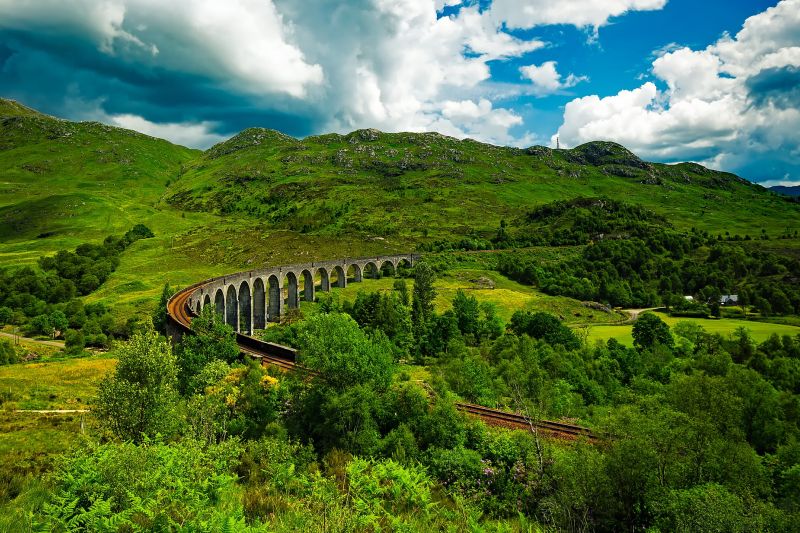Scotland has one of the oldest and most respected distilling traditions in the world, so if you’re considering taking a whisky cruise in Scotland, here’s what you can expect from the various regions.
Scotland’s Whisky-Producing Regions

The Whisky Landscape
Whisky, from the Scottish Gaelic “ueisge-beatha” or “water of life”, is produced all over the country and the final character of each dram is determined by a host of factors, including the composition of the water, the type of barley, the degree to which peat smoke has been introduced to the grain during the drying process, the local climate, the distillation and filtration process, and the type of casks used during the ageing process, as well as the length of said process.
Due to the importance of environmental factors, as well as local cultural distillation traditions, Scotland is divided into five legally protected whisky-producing regions. No region is better or more desirable than another; rather, whisky produced at different regions tends to have certain characteristics.

Speyside
Only recently recognised as a distinct region rather than a sub-division of the Highlands, the relatively small Speyside region is home to the majority of Scotland’s distilleries. Many of the world’s most popular malts, such as Glenfiddich, The Glenlivet and The Macallan, are Speyside malts (while The Macallan is not legally a Speyside malt, it is characteristically and traditionally considered as such). Any comprehensive whisky cruise in Scotland must therefore give this region its dues.
Speyside malts are characterised by sweetness, gentleness and complexity. The sweetness tends to resemble either a sherry character or a floral graceful, and it’s a rare Speyside dram that has more than a touch of peat.

Highlands
The Highland region is the second major whisky producing region, and contains the majority of Scotland’s remaining distilleries. Due to the size and geographical variation within the region, Highland malts vary widely in character. For example, Dalwhinnie (regarded by many as the world’s gentlest, easiest to drink whisky) hails from the central Highlands, while Clynelish (a much peatier dram) is distilled in the northern Highlands.
The Highland region is unlikely to be covered in any single whisky cruise. In Scotland, while whisky may be broadly stylistically divided into five regions, there is still considerable variation within these, and the Highlands are a testament to that fact.

Islay
A rugged Hebridean island, Islay produces some of the world’s most renowned single malts. Much like their rocky, spray-soaked and peat-rich island, Islay malts tend to be heavily peated, harsh and often with a whiff of the sea to them. Laphroaig, Ardbeg and Lagavulin are some of the more well-known Islay malts, but if you’ve not had those, you may still be familiar with the Islay flavour: Talisker, one of the world’s most highly regarded whiskies, in many ways exemplifies the harsh, salty, smoky and peaty character often ascribed to Islay’s whiskies (although Talisker is itself produced on the Isle of Skye, part of the Highland region).
If you’re a novice whisky drinker, or have a light palate, then consider leaving this region until your second or third whisky cruise in Scotland: Islay whiskies, while beloved by many, are often a little overwhelming for those less accustomed to the spirit, and (despite what the more macho whisky drinkers may think) there’s no shame in developing your palate before tackling the harsher malts.

Lowlands
The Lowland region occupies approximately the southern third of Scotland. Lowland malts are hard to come by in shops, as the region primarily caters to the blended whisky market, but there are a few, with Glenkinchie being probably the most famous example.
Lowland malts are usually subtle, light-bodied and dry, and rarely with any peat or smoke flavours at all. They make an excellent pre-dinner dram, and are also popular among those whose tastes tend toward the dryer side of things, such as dry white wine or dry sherry drinkers.

Campbeltown
And so we come to the final stop on our virtual whisky tour. In Scotland’s southwestern corner you’ll find Campbeltown, a small region with only three surviving distilleries: Glen Scotia, Longrow and Springbank.
Campbeltown malts are full-bodied and complex, and have absorbed a hint of the region’s coastal character in the form of a touch of salt. Those who enjoy Islay malts are likely to appreciate those from Campbeltown.
If you’ve a taste for whisky and for adventure then you should really consider one of our Scottish Whisky Trail Cruises!
 English
English
 Spanish
Spanish French
French German
German Norwegian
Norwegian Portuguese
Portuguese Swedish
Swedish Italian
Italian Russian
Russian Simplified Chinese
Simplified Chinese Japanese
Japanese